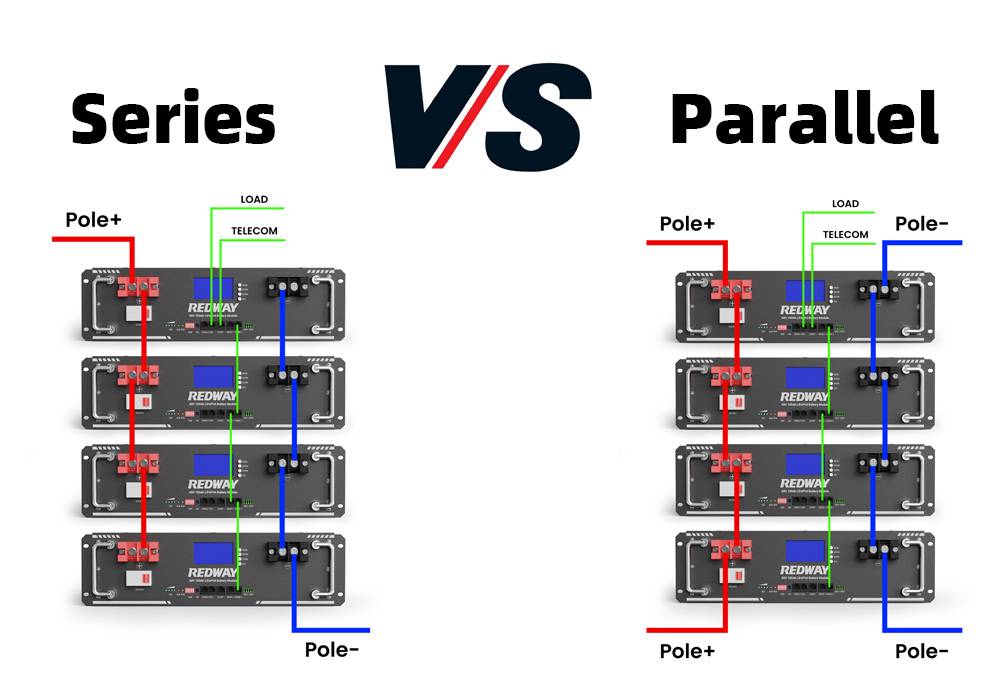You can connect multiple 12-volt batteries in parallel, and while there is no strict upper limit, it is generally advisable to connect up to 4 to 6 batteries for optimal performance and safety. This configuration increases the total capacity (Ah) while maintaining the same voltage.
Table of Contents
ToggleUnderstanding Parallel Connections
1. Voltage and Capacity
When batteries are connected in parallel, their voltages remain the same, but their capacities add together. For example, connecting two 12V 100Ah batteries in parallel results in a system that still outputs 12V, but with a total capacity of 200Ah. This is particularly beneficial for applications requiring longer run times without increasing voltage.
2. Benefits of Connecting Batteries in Parallel
- Increased Capacity: More batteries mean more available amp-hours, allowing for extended usage times between charges.
- Redundancy: If one battery fails, the others can continue to operate, enhancing reliability.
- Scalability: You can easily add more batteries to meet specific energy requirements.
Best Practices for Connecting Batteries in Parallel
1. Matching Specifications
To ensure safe and efficient operation, all batteries connected in parallel should:
- Have the same voltage rating (e.g., all 12V).
- Ideally have similar capacity ratings (e.g., all 100Ah).
- Be from the same manufacturer and production batch for uniformity.
2. Voltage Balancing
Before connecting batteries in parallel, check their individual voltages. It is advisable that the voltage difference between batteries does not exceed 100 millivolts (0.1V). This minimizes current flow issues during charging or discharging.
3. Wiring Considerations
Use appropriately sized wiring to handle the expected current load. Thicker wires reduce resistance and heat generation during operation. Ensure all connections are secure to prevent arcing or overheating.
4. Monitor Battery Health
Regularly check the health of each battery in the parallel configuration. Look for signs of swelling, leakage, or other physical damage. Implementing a Battery Management System (BMS) can help monitor individual battery performance and protect against overcharging or deep discharging.
Applications of Parallel Battery Configurations
Parallel configurations are commonly used in various applications:
1. Renewable Energy Systems
In solar power systems, multiple 12V batteries are often connected in parallel to store energy generated during peak sunlight hours, providing a reliable power source when needed.
2. Electric Vehicles
Electric vehicles may utilize a parallel battery configuration to achieve higher capacity without increasing voltage, allowing for greater range and performance.
3. Off-Grid Power Systems
For off-grid setups, connecting several 12V batteries in parallel ensures sufficient energy storage for extended periods without access to a power grid.
Latest News
Recent advancements in lithium battery technology have highlighted several important trends:
- Improved Safety Features: New designs focus on enhancing safety mechanisms within lithium batteries to prevent overcharging and thermal runaway.
- Increased Efficiency: The latest lithium batteries boast higher energy densities and faster charging capabilities.
- Sustainability Initiatives: The industry is increasingly focused on recycling lithium batteries and reducing environmental impact through sustainable practices.
Redway Expert Comment
“Connecting multiple 12V batteries in parallel is an effective way to enhance capacity while maintaining system voltage. At Redway Battery, we recommend careful attention to matching specifications and monitoring battery health to ensure optimal performance and longevity of your battery systems. Properly managed parallel configurations can significantly improve reliability and efficiency across various applications.”
Conclusion
In summary, while you can connect multiple 12V batteries in parallel with no strict upper limit, it is advisable to keep it within a practical range of 4 to 6 batteries for optimal performance and safety. Ensuring that all batteries are matched in specifications and regularly monitored will lead to a more reliable and efficient energy storage solution.



